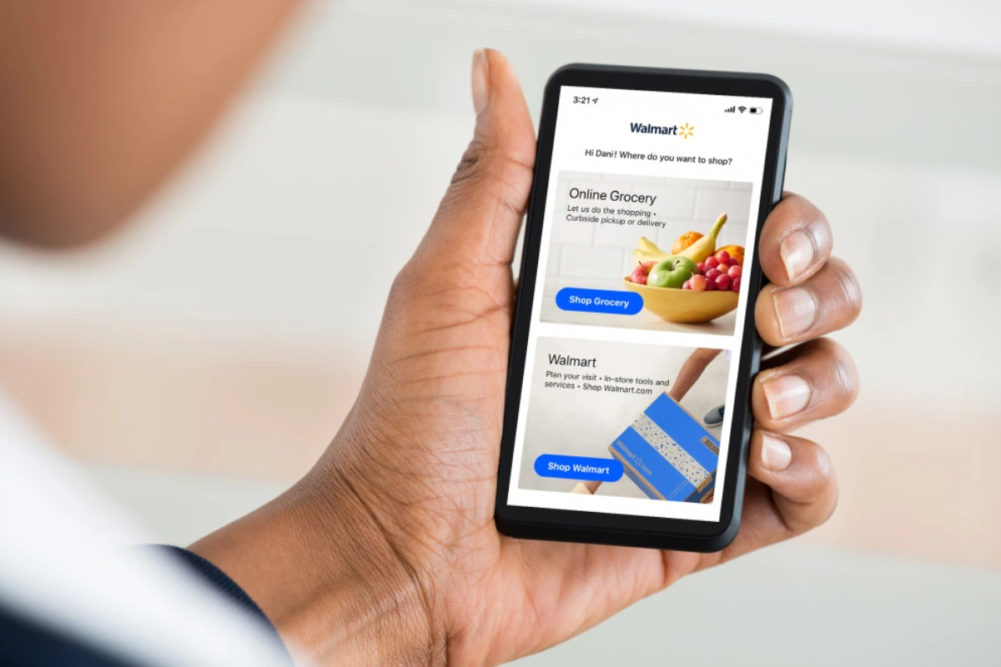BENTONVILLE, ARK. — Grocery remains a key area of focus for Walmart, Inc. as it continues its transformation toward a digital-first mindset.
The company is building capacity across all of its channels to meet demand for food-at-home. Investments in omnichannel capabilities also are helping it diversify its revenue stream, a key priority for the Bentonville, Ark.-based retailer.
“I think we’re in a position to be flexible and serve people how they want to be served,” said Doug McMillon, chief executive officer at Walmart, during a Sept. 9 virtual session at the Goldman Sachs Global Retailing Conference. “If they want to eat at home more, we’re there. If they want to shop in the store, we’re there. If they want pickup or delivery, we’re there.”
Providing customers with high-quality, affordable food that is easy to use or prepare will be key to sustaining the food-at-home trend, he added. To that end, Walmart recently announced a multi-platform partnership with media conglomerate Meredith Corp. to help customers plan and prepare meals faster.
The partnership features a suite of digital tools, including artificial intelligence-powered meal planning, shoppable recipes, chatbots and more. A visual search tool enables customers to take a picture of ingredients they have on-hand and receive meal suggestions.
Walmart also is making changes to its grocery app to improve the customer experience. One key change, set to roll out to all users by the end of the month, allows customers to make one basket and transaction for items that will be fulfilled in separate locations.
“The customer deserves to be able to enter anything that they need from Walmart, and we should figure out how to fill it in the background,” said John R. Furner, CEO of Walmart US, during a Sept. 8 session at the virtual Barclays Global Consumer Staples Conference.
The company has funneled more than $11 billion into e-commerce, supply chain and technology over the past two years. Those investments are benefiting a range of initiatives, from pickup, delivery and data analytics to Walmart Plus, its premium online subscription service, and Walmart Marketplace, a curated e-commerce channel focused on small- and medium-sized businesses.
Those initiatives are helping the company diversify its revenue stream, Mr. McMillon said. Walmart this summer began selling its pickup and drive-up services to thousands of small- and medium-sized businesses. It recently announced plans to commercialize its delivery capabilities through Walmart GoLocal, a new white label service for other businesses of various sizes and categories.
Walmart also plans to monetize shopper data generated through Walmart Connect, a demand-side platform that connects brands to consumers using the retailer’s past purchasing data, predictive audience segments and brand-level shopping behavior across mobile, digital and in-store channels.
“The composition of top and bottom line at Walmart has changed quite a bit and will change more,” Mr. McMillon said. “One of the things that has become apparent in recent years is that when you become a digital company, you can start to build businesses on top of other businesses in a way that's efficient and manageable.”

